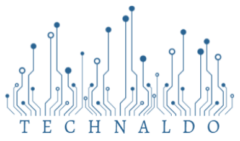What is Data Structure?
A data structure is a storage to store and organize data to access and update efficiently. It isn’t a programming language like C, C++, Java, etc. It is a set of algorithms any programming language uses to organize the data in the memory.
Importance:
Data structure provides a way of organizing, managing, and storing data efficiently as applications are becoming more complex and the amount of information is increasing daily. It may cause problems with processing speed, searching data, handling multiple requests, etc.
It plays a vital role in enhancing the performance of a program to store and retrieve the user’s data as fast as possible.
Data Structure and Algorithms:
These are the two most important aspects of computer science. Data structures help us to store and organize data, while algorithms allow us to process data in a meaningful way. Learning data structure and algorithms helps to solve problems and become a good programmer.
Types:
Data structures have two categories:
Primitive:
Primitive data structures directly operate according to the machine’s instructions. These are primitive data types like int, char, float, double, and pointer that can hold a single value.
Non-Primitive:
Non-primitive data structures are complex data structures derived from primitive data structures. They consist of two categories:
Linear Data Structure
It consists of elements arranged in sequence one after another. Since the elements arrange themselves in a particular order, they are easy to implement. However, the linear one is not the best when the program’s complexity increases.
- Array: An array is a collection of similar data elements stored at contiguous memory locations. It is the simplest form that you can access directly by only using its index number.
- Linked Lists: Elements connect through a series of nodes in a linked list structure. Each node contains the data items and addresses to the next node.
- Stack: Stack follows a specific order during which the operations are performed. It can be FILO (First In Last Out) or LIFO (Last In First Out).
- Queue: Queue is another linear structure in that elements are inserted from only one end and removed from another. However, it follows the FIFO (First In, First Out) order.
Non-linear Data Structure:
Non-linear data structures do not have any set sequence connecting all its elements, and every data element can have multiple paths to attach itself. Such data structures hierarchically support multi-level storage.
- Tree: A tree is a multi-level structure are a set of nodes. The topmost node is the root node, while the bottommost nodes are leaf nodes. Some tree-based data structures are General Tree, Binary Tree, Binary Search Tree, AVL Tree, Red Black Tree, and N-Ary Tree.
- Graph: A graph is a pictorial representation of a set of objects that connects by links known as edges. Points show the interconnected nodes as vertices, and the links that connect the vertices are edges. Some graph-based data structures are Connected or Disconnected Graph, Cyclic Graph, Vertex Labelled Graph, and Directed Acyclic Graph.
Advantages:
- Allows easier processing of data.
- It provides information stored on disk very efficiently.
- These are necessary for designing an efficient algorithm.
- It includes managing databases like indexing with the help of hash tables and arrays.
Disadvantages:
- It applies only to advanced users.
- If any issue occurs, it can be solved only by experts.
- Slow access in case of some data types
Conclusion:
Data Structures remain an essential aspect of a tech career. Knowledge about it helps you understand the working of each element. And based on that, you can select suitable data structures for your project.
Also Read: How can I restore deleted data from Google Chrome?

